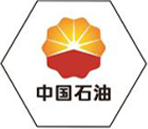
Aug . 09, 2024 16:20
Back to list
Innovative Solutions for Efficient Pressure Regulation in Industrial Applications with Advanced Reducing Devices
Understanding Pressure Reducing Devices Essential Components in Fluid Systems
Pressure reducing devices play a crucial role in various industrial and commercial applications. These devices are engineered to maintain a specific output pressure regardless of fluctuations in the supply pressure, ensuring the safe and efficient operation of fluid systems. In this article, we will explore the importance, types, working principles, and applications of pressure reducing devices.
Importance of Pressure Reducing Devices
In numerous applications, such as water distribution, gas supply, and chemical processing, it's vital to control pressure levels to prevent damage to equipment and ensure safety. Too much pressure can lead to catastrophic failures, leaks, or explosions, while too little pressure can hinder system performance. Therefore, pressure reducing devices help maintain an optimal pressure, enhancing the reliability and longevity of the system components.
Types of Pressure Reducing Devices
1. Pressure Reducing Valves (PRVs) These are the most common devices used to reduce high pressure from a supply line to a manageable level. PRVs operate automatically and adjust in real-time to variations in upstream pressure, providing a stable downstream pressure.
2. Pressure Regulators Similar to PRVs, pressure regulators are designed to maintain a constant output pressure. They are especially common in gas systems, where they ensure that gas is delivered at a safe and usable pressure.
3. Choke Valves These valves control the flow of fluids and can help reduce pressure by restricting the flow area. They are frequently used in oil and gas applications where pressure drops are necessary to manage flow rates.
4. Bursting Discs Although primarily used as safety devices, bursting discs can act as pressure reducing devices by rupturing at a predetermined pressure, thereby preventing overpressure conditions.
Working Principle
pressure reducing device

Pressure reducing devices function based on the principle of differential pressure. A typical pressure reducing valve, for example, contains a spring-loaded diaphragm. When the upstream pressure exceeds the designated setpoint, the diaphragm moves to restrict flow, effectively reducing the pressure downstream. As the downstream pressure drops below the setpoint, the valve reopens, allowing more fluid to flow until balance is restored.
The efficiency of these devices is vital. They not only ensure stable operation but also minimize pressure fluctuations that can cause wear and tear to equipment, leading to reduced maintenance costs and downtime.
Applications of Pressure Reducing Devices
Pressure reducing devices find applications across various industries
- Water Supply Systems In municipal water distribution, PRVs regulate water pressure to ensure a consistent supply to households and businesses, preventing pipe bursts and leaks.
- Natural Gas Distribution Gas regulators control the pressure and flow of natural gas in pipelines, ensuring safe delivery to customers while adapting to variations in demand.
- Chemical Processing In chemical plants, pressure reducing devices are essential for maintaining precise operating conditions, preventing overpressure that could lead to dangerous situations.
- Manufacturing Many manufacturing processes require specific pressure levels for optimal functioning. Pressure reducing devices help maintain these levels, ensuring product quality and safety.
In conclusion, pressure reducing devices are indispensable in modern fluid systems, offering safety, efficiency, and reliability. Their diverse applications across various industries underscore their importance in managing pressure and protecting both equipment and personnel. As technology advances, the design and functionality of these devices continue to improve, promising even greater operational efficiency in the future.
Latest news
-
Safety Valve Spring-Loaded Design Overpressure ProtectionNewsJul.25,2025
-
Precision Voltage Regulator AC5 Accuracy Grade PerformanceNewsJul.25,2025
-
Natural Gas Pressure Regulating Skid Industrial Pipeline ApplicationsNewsJul.25,2025
-
Natural Gas Filter Stainless Steel Mesh Element DesignNewsJul.25,2025
-
Gas Pressure Regulator Valve Direct-Acting Spring-Loaded DesignNewsJul.25,2025
-
Decompression Equipment Multi-Stage Heat Exchange System DesignNewsJul.25,2025

